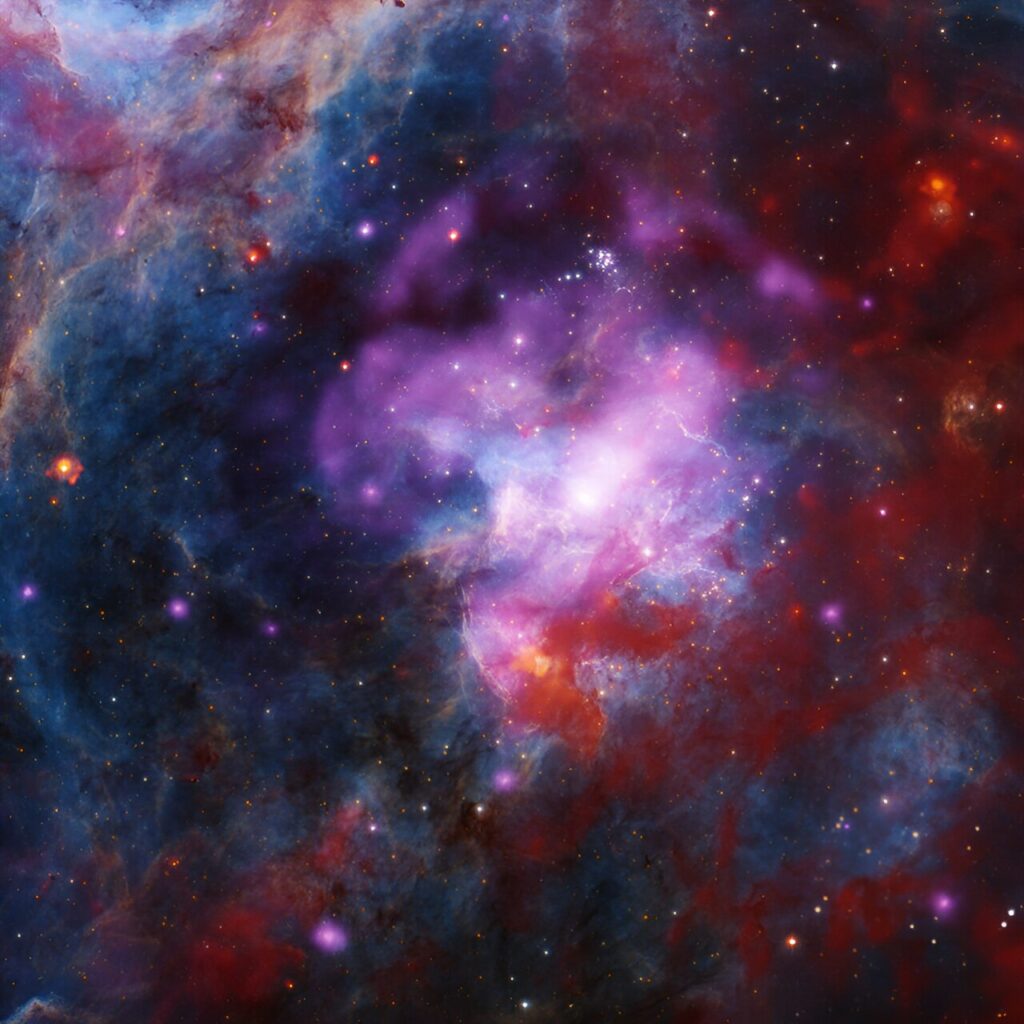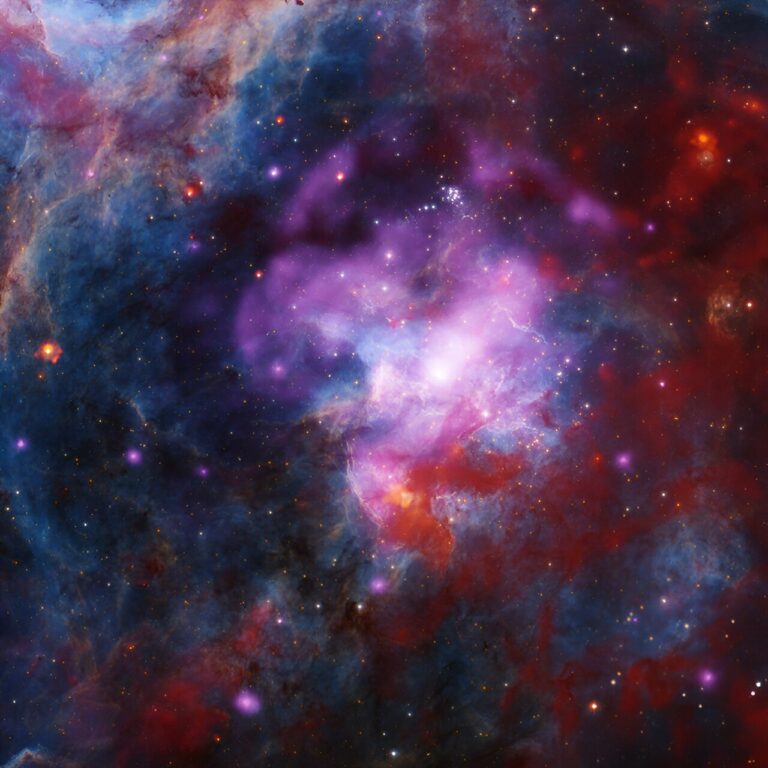NASA Telescopes Kick Off the Year with a Dual Impact
30 Dor B, also known as 30 Doradus B, is a captivating supernova remnant that showcases a vibrant and festive display of various types of light. This stunning image captures the remnants of not just one, but at least two exploded stars. Situated within a larger region of space where stars have been continuously forming for millions of years, 30 Dor B presents a complex landscape filled with dark clouds of gas, young stars, high-energy shocks, and superheated gas. It resides a staggering 160,000 light-years away from Earth in the Large Magellanic Cloud, a small satellite galaxy of our very own Milky Way.
To create this remarkable image, a combination of X-ray data from NASA’s Chandra X-ray Observatory (depicted in purple), optical data from the Blanco 4-meter telescope in Chile (represented in orange and cyan), and infrared data from NASA’s Spitzer Space Telescope (shown in red) were merged. Additionally, black and white optical data from NASA’s Hubble Space Telescope were incorporated to accentuate the image’s sharp features.
A dedicated team of astronomers, led by Wei-An Chen from the National Taiwan University in Taipei, Taiwan, meticulously analyzed the region surrounding 30 Dor B. They utilized over two million seconds of observing time from the Chandra X-ray Observatory to uncover intriguing findings. Among their discoveries was a faint shell of X-rays that stretches across approximately 130 light-years. To put this into perspective, it is worth noting that the nearest star to our sun is merely four light-years away. Furthermore, the Chandra data revealed the presence of particle winds emanating from a pulsar within 30 Dor B, resulting in the formation of a pulsar wind nebula.

The comprehensive findings of this research, led by Wei-An Chen, have been recently published in the esteemed Astronomical Journal. The paper’s co-authors include Chuan-Jui Li, You-Hua Chu, Shutaro Ueda, Kuo-Song Wang, Sheng-Yuan Liu, all from the Institute of Astronomy and Astrophysics at Academia Sinica in Taipei, Taiwan, as well as Bo-An Chen from National Taiwan University.
By combining the Chandra data with information gathered from Hubble and other telescopes, the researchers have concluded that a single supernova explosion cannot account for the observed phenomena. The presence of both the pulsar and the intense X-rays at the center of 30 Dor B is likely the result of a supernova explosion that occurred approximately 5,000 years ago, following the collapse of a massive star. However, the larger, fainter X-ray shell is too extensive to have originated from the same supernova event.
Instead, the team proposes that there were at least two supernova explosions in 30 Dor B, with the additional X-ray shell being produced by a separate supernova more than 5,000 years ago. It is also plausible that even more complex events have occurred in the distant past.
This article is republished from PhysORG under a Creative Commons license. Read the original article.
Do not forget to share your opinion with us to provide you with the best posts !




0 Comments